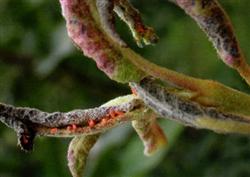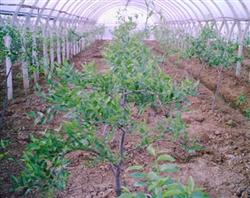What are the pruning techniques of pear trees in winter? Video introduction

What are the pruning techniques of pear trees in winter? How to prune pear trees in winter? We also ask experienced netizens to help introduce that winter pruning of pear trees is the pruning of pear trees from defoliation to pre-budding. the main purpose is to cultivate pear tree shape, adjust pear crown structure, cultivate pear fruiting branch groups, adjust pear flower bud quantity, adjust pear branch quality and quantity, promote ventilation and light transmission, renew rejuvenation crown, prolong senescence, achieve growth, fruit balance, stable and high yield, and lay a good foundation for high yield. The planting network has sorted out the pruning techniques of pear trees in winter according to the difference of tree age. the following are listed in detail for netizens' reference. Pruning methods of young pear trees: the main purpose of pruning young pear trees is to shape, cultivate a good skeleton, promote branching, expand crowns and promote early fruit. Young pear trees can gently cut and slow down the long branches, flatten the erect strong branches, retain the medium and short branches, and make the best use of the tips of the branches to expand the crown. Except for thinning and cutting part of the dense branches, generally do not carry out thinning. The overdense branches, weak branches, disease and insect branches and all the disordered branches on the main and secondary branches of young pear trees were cut off. The long branches and short branches were cultured into the fruiting branch group; the medium and short branches were clipped and the weak ones were released slowly; the branches with small angles were supported, pulled and suspended to expand the branching angle, ease the apical growth advantage and promote the early formation of flower buds. Pruning method of pear tree in full fruit period: the main purpose of pruning pear tree in full fruit period is to control tree growth, control tree body within a predetermined range, keep the crown out of shade, facilitate ventilation and light transmission, maintain a robust and stable golden mean tree potential, and prolong the full fruit period. For pear trees with stronger tree potential, it is necessary to control vigorous growth, more thinning and less truncation, go to erect branches and retain oblique branches, leave more flower buds, press the tree potential with fruit, and make it tend to the moderate tree potential; for the plants with weak tree potential, adopt heavier pruning methods to cut off strong branches and remove weak branches; take short cuts for some medium and short fruit branches, remove some flower buds, change fruiting branches into vegetative branches, and increase the proportion of vegetative branches. For pear trees with stable tree potential, the focus is on pruning the fruiting branch group; for pear trees with a large number of flowers, cut off inferior flower buds, cut short axillary flower branches, and adjust the ratio of fruiting branches to vegetative branches. The pruning method of the aging period of pear trees: different amounts of pruning should be carried out according to the aging degree of pear trees. The purpose of this period of pruning is to restore the pear tree potential, rejuvenate the branch group, and prolong the fruiting life. To retract the drooping perennial branches, choose a good upper dorsal branch, make the first branch grow upward, cut off part of the flower buds and remove the weak branches. Try to make use of overgrown branches to enrich the incomplete crown, restore the tree momentum and regain high yield. Serious aging pear trees should be sawed off the crown, leaving only the skeleton of the main side branches to promote hidden bud germination, re-cultivate the crown and restore yield. In the transformation of aging trees, it is necessary to strengthen the management of fertilizer, water, disease and pest control. Click for more pear tree planting techniques click to get more fruit planting techniques
- Prev

What are the methods of prevention and control of pear diseases and insect pests in winter?
What are the pear diseases and insect pests in winter? What are the methods of prevention and control of pear diseases and insect pests in winter? We also ask experienced netizens to introduce that the main diseases and insect pests of pear trees in winter are pear weevil, pear wasp, pear gall midge, pear scab, pear black spot, red yellow spider, shell insect and so on.
- Next

How to trim the jujube tree?
How to trim the jujube tree? Do you have a picture introduction? Also ask experienced netizens to help guide jujube growth process, there are main buds, secondary buds, hidden buds, adventitious buds; branches have jujube head (developmental branch), secondary branch (fruiting base branch), jujube strand (fruiting mother branch), jujube hanging (fruiting branch), jujube tree needs in the growth process.
Related
- Moge, come on! The staff of the peasant association in the producing area of cantaloupe were frightened when the crowd gathered.
- Causes and Solutions of low Fruit setting rate of Apple
- Symptoms and control measures of passion fruit virus disease
- Fruit growing lesson: how do apple orchards keep high yields?
- Can you build orchards in the mountains? What are the pros and cons?
- How to manage the coloring period of Crisson grape?
- This paper introduces the processing technology of two kinds of fig products.
- How much is a month for retired teachers in rural areas by 2020?
- How can strawberry planting increase sugar content? We should pay attention to management in many aspects.
- What are the cultivation techniques on how to improve the yield of golden fruit?

